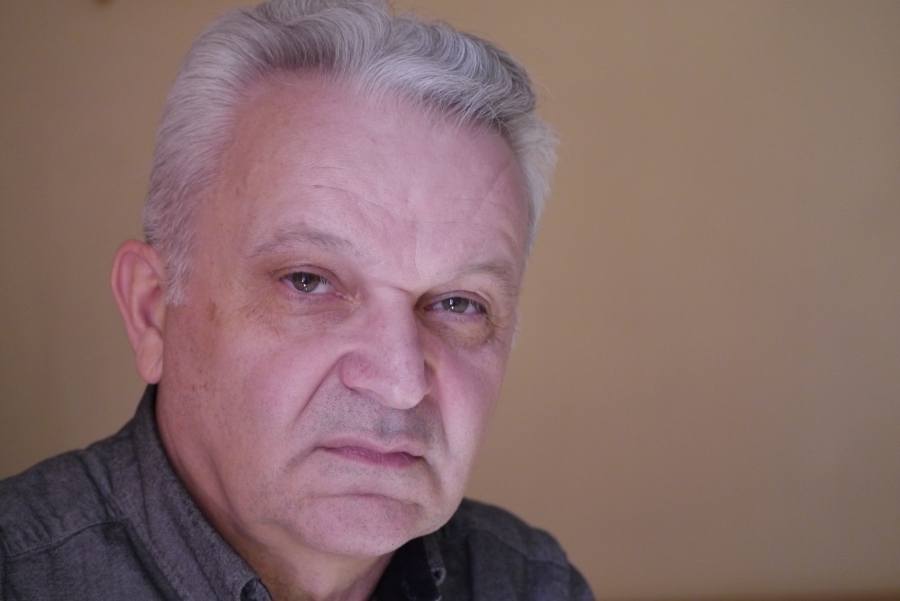
Gegham Baghdasaryan, editor of the monthly publication The Analyticon published in Stepanakert, has been living in Yerevan in recent years. He is the president of the Stepanakert Press Club and knows Nagorno-Karabakh’s media sector from inside.
In his opinion, the constitutional referendum that took place in February in Artsakh was covered quite actively by media in Armenia. The reasons, however, are not unequivocal.
From what I recall, Artsakh’s constitutional referendum was an exceptional event, whereby journalists from Armenia were taken to Stepanakert free of charge. In your opinion, why was that?
The Artsakh authorities have always been more open and attentive to outside media outlets, particularly those from Armenia. The instances are not few, when refusing to provide some information or another in a timely manner to some local media outlet or another, they provided it in a timely fashion to outside media outlets.
As a result, Artsakh media outlets are forced to cite or reproduce Artskh news from any published report of any media outlet in Armenia.
Artsakh media outlets are less interesting and less important for the local authorities. The reason is the paltry Artsakh media sector, the “authors” of which are the authorities themselves, as well as the total control of local media outlets.
And this is why the authorities try to “conquer new horizons.”
Generally, with the active involvement of outside media outlets, an attempt was made to conceal the domestic disinterest and leave an impression of “landmark elections.” Let’s not forget, as well, the propaganda component, which is a very serious issue for an unrecognized state.
The authorities’ attempts to actively involve media outlets from Armenia perhaps were aimed mainly at that, since entering the international arena with local resources, to put it mildly, is not possible. It can be said that at least this mission served its purpose.
Whereas generally Armenian media outlets’ indifference to events in Artsakh is quite understandable: newsworthy opportunities occur quarterly at best, but, you know, it’s not possible to keep the topic “hot” with that.
By and large, there’s no newsworthiness [here]. It remains to characterize the coverage as expeditionary, which Artsakh authorities are accustomed to doing.
Was coverage of Artsakh’s constitutional referendum, the discussion on ‘yes’ and ‘no’ likewise expeditionary?
The coverage, or rather, the propaganda, was sufficiently visible/audible/understandable. As for the sufficient presentation of the yes/no [arguments], well, by and large, they were presented in almost the same proportion as they existed in Artsakh’s public life.
In Artsakh’s unipolar political arena, in the unipolar public arena, understandably the “no’s” were incomparably fewer, which was reflected in Armenian media outlets.
It’s a different matter that broadcast media, in turn, paid less attention to the “no” [camp] than, say, new media and social media. But the guilty in all cases is, as they say, the bitter reality, and not the mirror.
If media outlets in Armenia more or less vigorously cover events occurring in Artsakh, the same can’t be said of Artsakh media outlets. In your opinion, what is the reason?
Artsakh media outlets react to real life according to their social status, in a manner appropriate to the degree of independence they have or don’t have, according to the development of the media sector and the amount of diversity in that media sector.
And just one fact is enough to understand the paltry state of the media sector: four TV companies operated for years in Armenia’s Shirak marz [province] alone, while operating in the second Armenian state [Karabakh] from the beginning is only one TV company, Artsakh’s state (called public) television with its daily few hours of airtime.
And you talk about coverage…
It seems that the Karabakh media sector has problems. What are they?
Assessing the issues of Artsakh’s media sector in isolation wouldn’t be right; they must be viewed in the context of the overall public and political life.
And we’ve already spoken about public and political unipolarity. The thing is, diversity of information is not possible if there’s no diversity in the political arena.
And diversity in the political field, in turn, depends on diversity in the economic arena, from diversity of the owners of the economic levers and resources.
It’s no secret that all the levers and resources are owned by the government and a pro-government clique. As for where informational diversity is to appear after all this, the devil himself would whimper from helplessness…
Artsakh media outlets don’t produce stories on civic movements and opposition activities in Armenia. Is this a local stereotype that, for example, Armenia’s domestic problems (e.g., Electric Yerevan) shouldn’t be reported?
We live in a period of flourishing stereotypes; we consume more stereotypes than bread, and it’s been a long time since our informational stomach was able to distinguish “surrogate” from “organic” information food.
Life with its diversity seems very dangerous for our informational, let me say, health. The ruling authorities lovingly care about this “health” of ours. And through controlled media they serve that which cannot ruin, let me say, this health of ours.
There is a carefully designed media diet. This is quite natural for a place where media outlets have long conceded their place to propaganda means.
And the exceptions, as they say, don’t constitute quality.
Interview by Anahit Danielyan


Add new comment
Comments by Media.am readers become public after moderation. We urge our readers not to leave anonymous comments. It’s always nice to know with whom one is speaking.
We do not publish comments that contain profanities, non-normative lexicon, personal attacks or threats. We do not publish comments that spread hate.